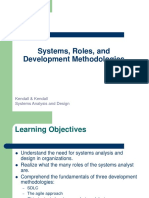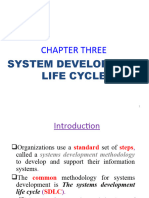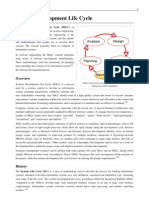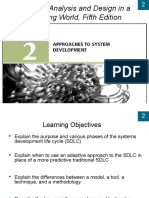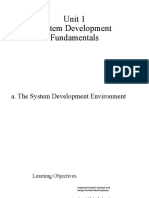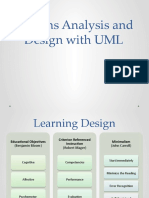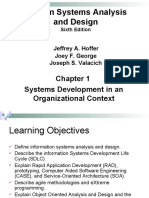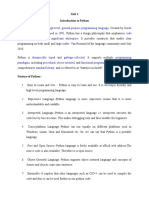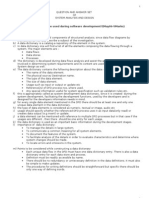0% found this document useful (0 votes)
14 views32 pagesSystem Analysis and Design Methodologies
The document outlines various system development methodologies, including the Systems Development Life Cycle (SDLC), Object-Oriented Systems Analysis and Design, and the Agile approach. It details the phases of SDLC, which include identifying problems, analyzing system needs, designing, developing, testing, and implementing systems. Additionally, it discusses the Agile methodology's focus on flexibility and collaboration, along with its iterative development process.
Uploaded by
nhuquan.dev.pyCopyright
© © All Rights Reserved
We take content rights seriously. If you suspect this is your content, claim it here.
Available Formats
Download as PDF, TXT or read online on Scribd
0% found this document useful (0 votes)
14 views32 pagesSystem Analysis and Design Methodologies
The document outlines various system development methodologies, including the Systems Development Life Cycle (SDLC), Object-Oriented Systems Analysis and Design, and the Agile approach. It details the phases of SDLC, which include identifying problems, analyzing system needs, designing, developing, testing, and implementing systems. Additionally, it discusses the Agile methodology's focus on flexibility and collaboration, along with its iterative development process.
Uploaded by
nhuquan.dev.pyCopyright
© © All Rights Reserved
We take content rights seriously. If you suspect this is your content, claim it here.
Available Formats
Download as PDF, TXT or read online on Scribd
/ 32



